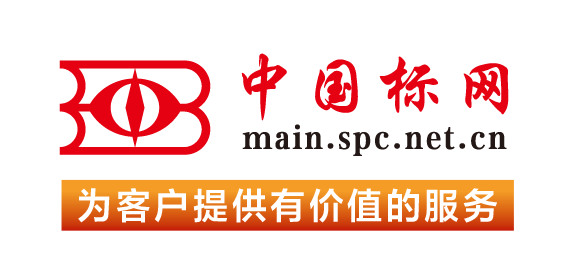【国外标准】 Standard Guide for Unrestricted Disposition of Bulk Materials Containing Residual Amounts of Radioactivity
本网站 发布时间:
2024-02-28
开通会员免费在线看70000余条国内标准,赠送文本下载次数,单本最低仅合13.3元!还可享标准出版进度查询、定制跟踪推送、标准查新等超多特权!
查看详情>>
适用范围:
6.1 Materials encountered during D&D may contain residual radioactivity varying in amounts from that in irradiated fuel to barely detectable quantities in or on building materials. It is clear that highly radioactive materials have to be disposed as radioactive waste pursuant to 10 CFR 60 and 10 CFR 61. Conversely, it is not reasonable to expend a disproportionate amount of resources to isolate materials that contain minute quantities of radioactive materials that will not cause even statistically measurable health effects.6.2 This guide provides a rationale and methodology for distinguishing between materials that contain sufficient radioactivity to warrant isolation of some type (such as storage awaiting decay, near-surface disposal, disposal with intruder protection, or placement in a deep repository) from materials with insignificant radioactive content. Materials with insignificant radioactive content can be recycled in the economy or disposed of in conventional (landfill) facilities without adverse health effects. Materials that meet the criteria identified in this guide are not simply excluded from regulation because they do not fall precisely in the regulatory scope. They are sufficiently free of radioactive material so that no further efforts at control are justified for radiation protection purposes. Therefore, the release of materials for unrestricted use in accordance with this guide meets the criteria for being an “as low as reasonably achievable” (ALARA) activity.6.3 For the purpose of this guide, the return of materials containing residual radioactivity to society without regulatory restrictions is referred to as “unrestricted release based on the absence of the credible potential for adverse health effects.” This guide asserts that materials recycled this way will have no statistically measurable health effects regardless of use. It does not guarantee that the materials are suitable for use in every possible application, for example, trace amounts of radionuclides in materials may not be acceptable for certain photographic and electronic applications.6.4 This guide also asserts that the owner of the materials is responsible for ensuring that society's criteria for “no measurable health effects” is met before release, and that the responsibility for providing materials with the purity required for a special application rests not with the owner, but with the developer of that application.1.1 This guide provides an approach for developing a basis for obtaining approval for release of bulk materials to be removed from a decontamination and decommissioning (D&D) or environmental remediation site from regulatory control. This would be addressed in the decommissioning plan (Guide E1281). Fig. 1 follows the logic described in the MARSAME for determining the materials that could be considered for release. Materials that negotiate this logic tree are referred to as “candidate for release based on dose.”1.2 For purposes of this guide, bulk materials shall consist of, for example, building materials, concrete rubble, soils, and internally contaminated or activated equipment and facility components.1.3 This guide is intended to apply to those equipment and materials to be removed from the site for their disposition as opposed to real property (buildings and grounds) that are to remain.1.4 Warning—Breathing of asbestos dust is hazardous. Asbestos and asbestos products present demonstrated health risks for users and for those with whom they come into contact. In addition to other precautions, when working with asbestos products, minimize the dust that results. For information on the safe use of chrysoltile asbestos, refer to “Safe Use of Chrysotile Asbestos: A Manual on Preventive and Control Measures.”1.5 This standard does not purport to address all of the safety concerns, if any, associated with its use. It is the responsibility of the user of this standard to establish appropriate safety and health practices and determine the applicability of regulatory limitations prior to use. For a specific hazard see 1.4.
标准号:
ASTM E1760-16
标准名称:
Standard Guide for Unrestricted Disposition of Bulk Materials Containing Residual Amounts of Radioactivity
英文名称:
Standard Guide for Unrestricted Disposition of Bulk Materials Containing Residual Amounts of Radioactivity标准状态:
Active-
发布日期:
-
实施日期:
出版语种:
- 推荐标准
- ASTM 51401-21 Standard Practice for Use of a Dichromate Dosimetry System
- ASTM 51956-21 Standard Practice for Use of a Thermoluminescence-Dosimetry System (TLD System) for Radiation Processing
- ASTM A1010/A1010M-24 Standard Specification for Higher-Strength Martensitic Stainless Steel Plate, Sheet, and Strip
- ASTM A1016/A1016M-24 Standard Specification for General Requirements for Ferritic Alloy Steel, Austenitic Alloy Steel, and Stainless Steel Tubes
- ASTM A105/A105M-24 Standard Specification for Carbon Steel Forgings for Piping Applications
- ASTM A1064/A1064M-24 Standard Specification for Carbon-Steel Wire and Welded Wire Reinforcement, Plain and Deformed, for Concrete
- ASTM A108-24 Standard Specification for Steel Bar, Carbon and Alloy, Cold-Finished
- ASTM A1080/A1080M-24 Standard Practice for Hot Isostatic Pressing of Steel, Stainless Steel, and Related Alloy Castings
- ASTM A1090/A1090M-19(2024) Standard Specification for Forged Rings and Hollows for Use as Base Plates in Power Transmission Structures
- ASTM A1115/A1115M-24 Standard Practice for Construction of Mechanically Stabilized Earth Walls with Inextensible Soil Reinforcement
- ASTM A1128-24 Standard Specification for Stainless Steel Shielded, Rubber Gasketed Couplings Having an Integral Restraint Feature for Joining Hubless Cast Iron Soil Pipes and Fittings Where External Restraint Is Required
- ASTM A179/A179M-24 Standard Specification for Seamless Cold-Drawn Low-Carbon Steel Heat-Exchanger and Condenser Tubes
- ASTM A234/A234M-24 Standard Specification for Piping Fittings of Wrought Carbon Steel and Alloy Steel for Moderate and High Temperature Service
- ASTM A242/A242M-24 Standard Specification for High-Strength Low-Alloy Structural Steel
- ASTM A249/A249M-24a Standard Specification for Welded Austenitic Steel Boiler, Superheater, Heat-Exchanger, and Condenser Tubes
 我的标准
我的标准 购物车
购物车 400-168-0010
400-168-0010














